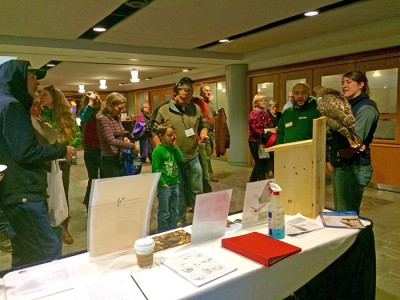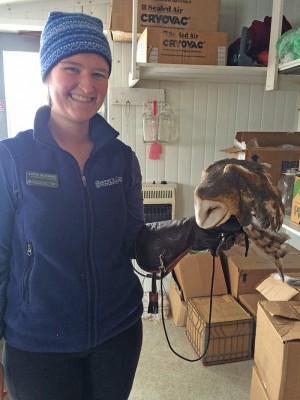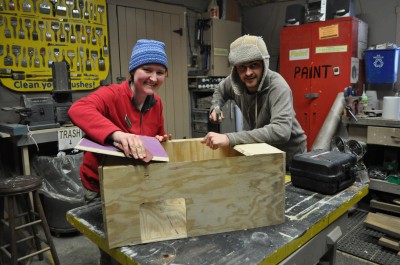What do barn owls have in common with Brussels sprouts, or kestrels with kale?
Farms!
These are connections we’ve been talking about in the past few weeks with farmers at the Pennsylvania Sustainable Agriculture Conference and Penn’s Valley Conservation Association.
Farmland raptors like the American kestrel, barn owl, and short-eared owl provide natural pest control because they eat insects and rodents. In fact, a nesting pair of barn owls can eat more than a thousand mice in one season! That’s a huge help on a busy farm.

While many farmers discussed their frustration with raptors like red-tailed hawks and great-horned owls eating their chickens, I think it’s possible to establish a balance between respecting and protecting wildlife while getting what we need from the earth.
Unfortunately, American kestrel and barn owl numbers are declining in Pennsylvania. Scientists speculate that habitat loss and pesticide application hurt these populations.

We can help by building nest boxes for Kestrels and Barn Owls to give them cozy, safe places to live—whether you have a farm or not! Last week a fellow intern and I built a barn owl box from scrap-wood. It was an inexpensive project that was easily completed in one day.

Building a bird box is a great family project. Younger kids can measure dimensions and use hand tools, and older kids can help use power tools. You can find plans here at Hawk Mountain’s website.
Pair with a reading of Owl Babies by Martin Waddell or Owl Moon by Jane Yolen for even more natural history fun with the whole family.
So, the next time you dig into mashed potatoes or corn, you can thank farmland raptors that help farmers every day. Give them a hand by building a nest box today!
